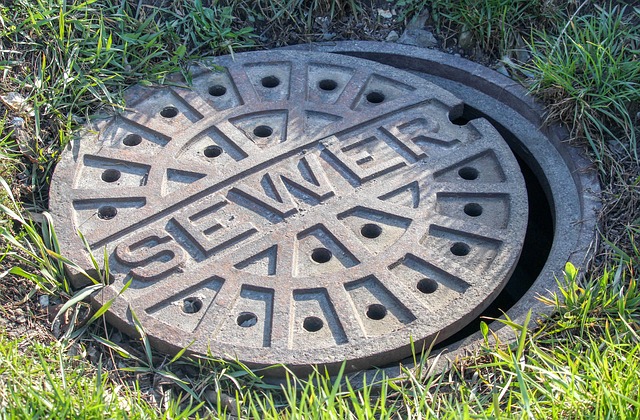NYS Workers Comp Rate for Code 6306 Sewer Construction
Description: Code 6306 applies to the installation of force main-type sewage work; the installation of storm sewer lines; construction of drain concrete boxes; catch basins; manholes; laying of pipe; etc., for storm sewer systems. This Code applies to all mechanical or hand tool trench digging; boring; hauling; handling and laying of pipe; making connections; masonry and concrete work; fence construction work; filling or backfilling; tunneling at street crossings. Essentially this Code covers all types of storm and sanitary sewer construction projects, regardless of the size of pipe and the depth below the ground surface.
Code 6306 is all-inclusive class for employers engaged in sewer construction operations.
Materials Used: trenching and digging tools, concrete, masonry equipment, hauling and backfilling equipment.
Pricing: Solid companies with a good loss history can obtain better than average pricing on NYS Workers compensation rates.
SEWER CONTRACTORS
Category: Contractors – Construction
SIC CODE: 1623 Water, Sewer, Pipeline, and Communications and Power Line Construction
NAICS CODE: 237110 Water and Sewer Line and Related Structures Construction
238220 Plumbing, Heating, and Air-Conditioning Contractors
Suggested ISO General Liability Code: 98820
Suggested Workers Compensation Codes: 6306
Description of operations: Sewer contractors specialize in the construction of sewer lines for utilities and the hookup of residential or commercial buildings to those lines. Operations consist of excavating trenches, laying the sewer lines, placing the lines into the trenches, connecting the piping together, then filling in the trench with dirt or other materials. The sewer lines from individual buildings or residences, often already laid by general plumbers, are then hooked up to the sewer system. The contractor may maintain, repair, or replace existing sewer lines.
Property exposures at the contractor’s own location are usually limited to those of an office and storage of materials, equipment, and vehicles. Sewer pipes waiting to be installed are bulky but present little likelihood of damage from fire, inclement weather, theft, or vandalism. Fire hazards may arise from refueling and repair operations due to the storage and use of flammable gasoline and other fuel sources.
Crime exposure is from employee dishonesty. Background checks should be conducted prior to hiring any employee. All orders, billing, and disbursements must be handled as separate job duties and regularly audited. Physical inventories should be conducted on a regular basis to prevent employee theft of equipment.
Inland marine exposures include accounts receivable if the contractor bills customers for services, contractors’ equipment, construction materials in transit, installation floater, and valuable papers and records for customers’ and vendors’ information. Excavation and boring equipment or materials, including large concrete or cast iron piping and lines, can be large and difficult to transport without adequate loading, tie-down and unloading procedures. If the equipment’s load capacity is exceeded during excavation and laying of sewer lines, it may be damaged. Equipment may strike underground objects or utilities, fall into holes or pits, slip or fall into mud, water, or sinkholes, be damaged in rock, land, or mudslides, or burst into fire from overload. Equipment may be subject to changes in the weather, water hazards or being struck by other vehicles. Materials and equipment left at job sites may be subject to theft and vandalism. Equipment should be secured and rendered inoperable when not in use.
Premises liability exposures at the contractor’s office are generally limited due to lack of public access.
At the job site, digging and other operations pose numerous hazards, especially if the contractor exercises inadequate control of the area. The public and employees of other contractors can be injured due to trips and falls over debris, equipment, or uneven ground. Construction sites create an attractive nuisance hazard, especially if work is close to residential areas. Once a trench is excavated, there must be shoring or other supports to prevent collapse if people are to work in the trench. Digging can result in cutting utility cable, damaging property of the utility company and disrupting service to neighboring residences or businesses. A significant morale hazard may be indicated by the absence of detailed procedures to determine utility locations and to research prior uses of the land. Construction sites create an attractive nuisance hazard, especially if work is close to residential areas. All equipment must be disabled when not in operation to prevent untrained individuals from using it. Fencing must be in place with appropriate warning signs to prevent trespassing.
Completed operations exposures can be very high if the sewer piping is not properly connected and sealed as any spillage or leakage could cause contamination, bodily injury and disease, and property damage. Shoring methods are vital to prevent cave-in following excavation, especially if under streets and roads and any structures.
Environmental impairment liability exposure can be very high due to the transportation and disposal hazards if the contractor removes old sewer lines. Buried sewer lines may gradually leak, causing serious contamination of the soil and possibly groundwater. Operations can result in claims of noise or dust pollution by neighboring properties and claims for cumulative structural damage to neighboring foundations from heavy traffic.
Automobile exposures are high due to the transport of oversize sewer piping, machinery, and equipment. Secure tying down is vital to prevent heavy damage to other vehicles. In rural areas, roads may be narrow and the ground uneven, increasing the risk of collision and upset. The driver of the truck must be trained in handling a top-heavy vehicle as considerable skill and knowledge are required for safe driving. If there is a collision, the resulting overturn may spill the load onto a public road and prevent access until clean up is completed. All drivers must have appropriate licenses and acceptable MVRs. Vehicles must be maintained and the records kept in a central location.

